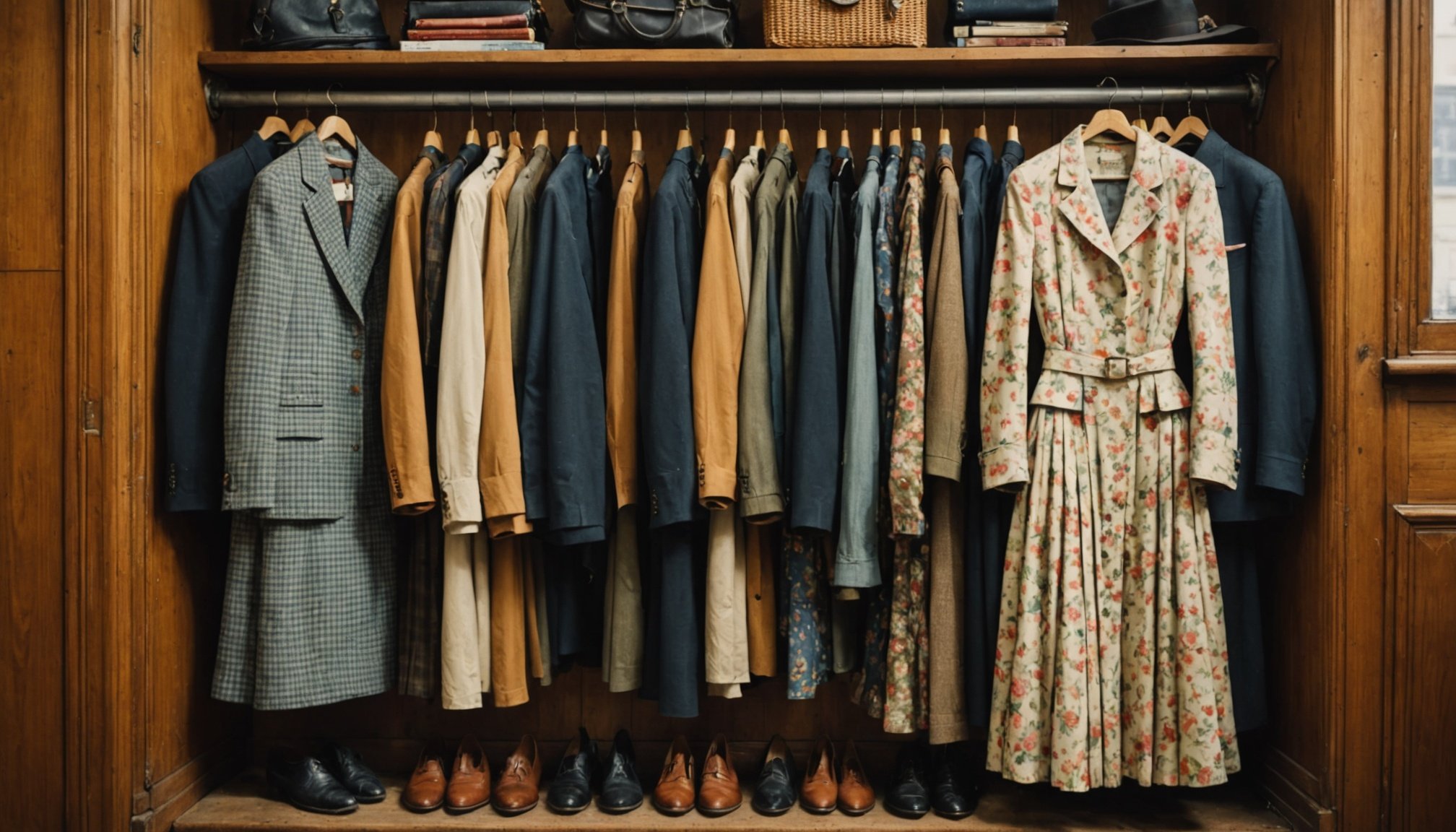Moving a collection of vintage clothing can be an exciting yet challenging task. The intricate details, delicate fabrics, and historical value attached to vintage clothing items make them precious. Whether you are a business owner selling vintage clothing online, a fashion enthusiast with a personal collection or a vintage shop owner shifting to a new location, your items deserve special attention and care during a move.
The key to a successful move lies in thorough planning, careful packing, and choosing the right way to transport your vintage clothes. In this article, we will help you navigate this process with minimal stress and maximum efficiency.
Cela peut vous intéresser : Top Mistakes to Avoid When Relocating in the UK: Your Essential Guide for a Smooth Move
1. Catalogue and Photograph Your Collection
Before embarking on a move, it’s crucial to catalogue your vintage clothing collection. This involves documenting important details about each item, such as its era, designer, fabric type, and any distinguishing features.
Photographing your items is also a good idea. Having a visual record will help you or your customers identify items easily and quickly after the move. Photographs can also serve as proof of the item’s condition before the move, in case any damage occurs during transport.
Avez-vous vu cela : What is the optimal timeline for organizing a house move in London?
This process can take a lot of time, but it’s a worthwhile investment. Not only will it make unpacking and setting up your new space easier, but it will also give you peace of mind knowing your collection is well-documented and accounted for.
2. Properly Pack Your Vintage Clothing
Packing is perhaps the most important step in moving a vintage clothing collection. Vintage clothes are often delicate and can be easily damaged by improper handling.
To start, clean your clothes properly. Dirt and oils can set into fabrics over time and cause damage. However, don’t just toss your items into the washing machine. Many vintage clothes need special care and should be hand-washed or dry cleaned.
Next, use acid-free tissue paper to wrap each item. This will help prevent color transfer, fabric staining, and other damage. It’s especially important for items with sequins, beads, or other embellishments that could scratch or snag other clothes.
Avoid using plastic bags or bins for storage as these can trap moisture and cause mold or mildew. Instead, pack your items in breathable fabric bags or cardboard boxes.
Lastly, don’t overpack your boxes. Overfilling can cause wrinkles and damage to your clothes. When your items are packed, clearly label each box with its contents and any special handling instructions.
3. Choose the Right Transportation Method
Once your vintage clothes are properly packed, it’s time to choose your transportation method. The method you choose will depend on the size of your collection, the distance of your move, and your budget.
If you’re moving a small collection or moving locally, you might be able to transport your items in your own vehicle. This can save you money and give you more control over the handling of your items.
For larger collections or long-distance moves, you might need to hire a professional moving company. These companies have the experience and resources to handle large moves safely and efficiently. Make sure to do your research and choose a company that has good reviews and a track record of handling delicate items with care.
4. Setting Up Your New Space
After moving your vintage clothing collection, setting up your new space is the next step. This is your chance to create a space that is both attractive and functional for your collection.
If you’re selling your vintage clothing online through platforms like Shopify, you’ll want to create a space that allows you to easily photograph and list your items. A clean, well-lit area with plenty of storage will help keep your business running smoothly.
If you’re a fashion enthusiast or a private collector, you may want to display some of your favorite pieces. Make sure to store them in a cool, dry place away from direct sunlight to prevent damage.
Regardless of why you’re moving your collection, organization is key. You can categorize your items by era, designer, type of clothing, or any other method that makes sense for you.
5. Keep in Touch With Your Customers
Finally, if you’re in the business of selling vintage clothing, remember to keep your customers informed about your move. Updates about your progress, changes in availability, and expected reopening dates will keep your customers engaged and excited about your new location.
You can use social media, email newsletters, and your Shopify store to communicate these details. This proactive communication shows your customers that you value their business and are working hard to minimize any disruptions.
Moving a collection of vintage clothing can be a daunting task, but with careful preparation and planning, you can ensure a smooth transition. Remember, the goal is not just to move your collection, but to preserve these beautiful pieces of history for future generations to enjoy.
6. Sell Your Vintage Clothing Online
After successfully relocating your vintage clothing collection, it’s time to set up your online store and start selling. Selling vintage clothing online has become increasingly popular, providing opportunities to reach a wider customer base. Sites such as Shopify offer a free trial to set up your online store.
To begin, upload high-resolution photographs of your items on the platform. The earlier taken photographs will help in this process. Ensure you include detailed descriptions for each item, including the era, designer, and fabric type.
Whether it’s a second hand 1920s flapper dress or a bold 80s coal terry sweatshirt, clear and informative descriptions are key. They give your potential buyers a good understanding of what they’re purchasing and can increase the chances of a sale. Don’t forget to include the size and any unique features or flaws.
Next, decide on your pricing. You’ll want to consider the age, rarity, and condition of each piece, as well as any designer labels. Research is essential here, so spend time looking at what similar items are selling for on different platforms.
Finally, once your online store is set up, promote your collection on social media. Regularly posting on platforms like Instagram, Facebook, and Pinterest can attract more customers and drive traffic to your store. Keep your posts engaging by sharing the history behind your items or offering styling tips.
7. Maintain and Preserve Your Collection
Now that your vintage clothing store is set up and running, it’s essential to continue maintaining your items. Vintage clothes, unlike modern ones, often require special care to preserve their beauty and value. Routine checks for any signs of damage such as moth holes, fabric tears, or stains are crucial.
Remember to store clothes properly, away from direct sunlight and in a cool, dry place. Use acid-free tissue paper between items and avoid plastic storage as it can trap moisture, leading to mould and mildew.
If you plan to keep the clothes for an extended period, consider having them professionally cleaned. Even if the clothing seems clean, invisible body oils and perfumes can degrade fabric over time. A professional cleaner experienced in handling vintage items can do this correctly.
Conclusion
Moving a collection of vintage clothing within the UK can be a complex task, but with a meticulously planned approach, it can be managed efficiently. From cataloguing to packing, choosing the right transportation method, setting up your new space and finally selling online, each step plays an integral part in ensuring the preservation and continual value of your vintage collection.
By maintaining regular communication with your customers through social media and email newsletters, you create a strong relationship that extends beyond the simple transaction of selling vintage clothing online.
Also, continual maintenance is necessary to keep these beautiful pieces of history in the best condition, giving them the chance to be enjoyed by future generations of vintage fashion enthusiasts.












